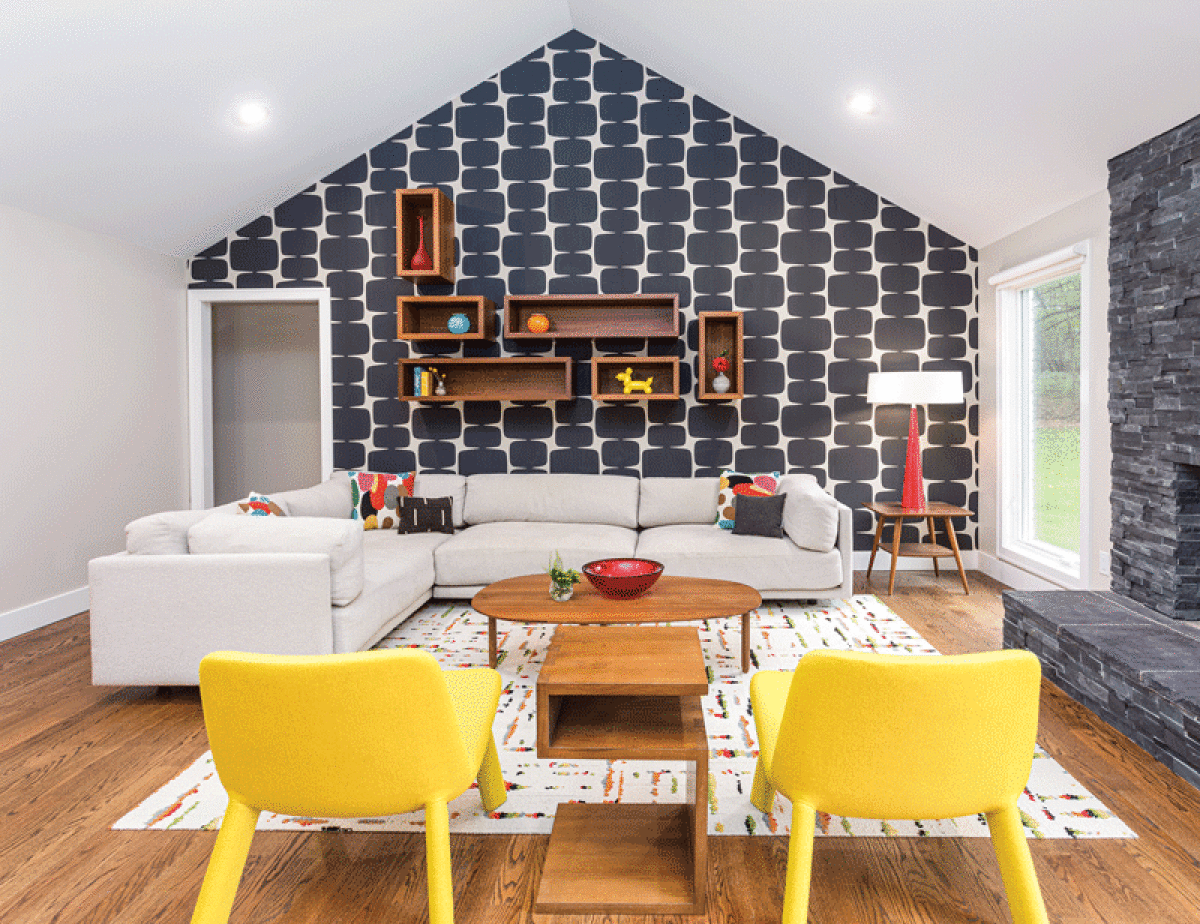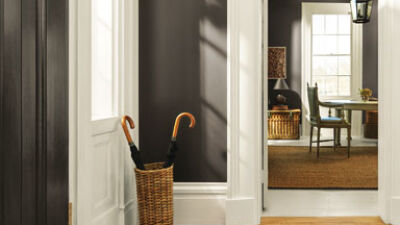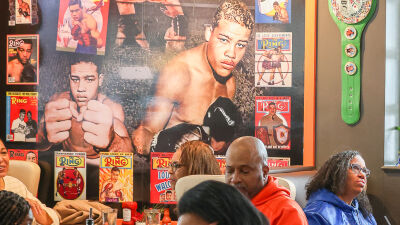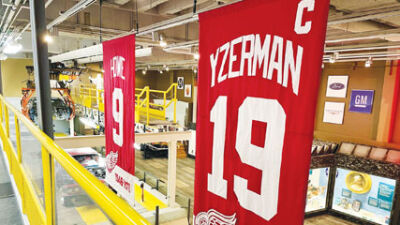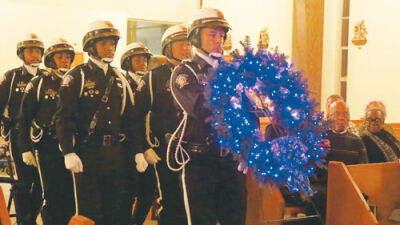METRO DETROIT — Classic yet timeless, stylish yet casual, midcentury modern design has gone from a symbol of postwar futurism to a retro aesthetic that makes any space pop.
Changing up a room or whole home to fit the midcentury modern style can be a fun project for anyone looking to spruce up their living space and is a more accessible look to achieve than one might think.
Before diving headfirst into a midcentury modern redesign, understanding the history and ideas behind the art movement give key insights into what designers were thinking.
Gregory Wittkopp, director of the Cranbrook Center for Collections and Research, said midcentury modern pioneers were living in an America dominated by Tudor and Colonial Revival buildings. These styles were steeped in European history, and the pioneers saw that history as one of the causes of the two world wars that ravaged the first half of the 20th century.
“Coming out of the ethos of World War II, (the question was) how could (designers) create a style that has less history associated with it, that seemed fresh (and) gave everybody a sense of creating a clean slate,” Wittkopp said.
The style’s pioneers found inspiration in Europe’s interwar modern art movements, particularly the International Style and Bauhaus. The sharp lines, plain colors and simple use of materials stood in sharp contrast to the styles of old, but it took until the 1950s for designers to take the interwar styles and give them a distinctly American feel.
“It was almost seen as too stark — too modern, if you will,” Wittkopp said. “After World War II, it is taking (the International Style) but it is creating a style that I think has a little more humanity to it. It was a little bit more of a sense that you could picture you and your family living in these environments, whereas that was a little bit harder to do with the International Style.”
Elin Walters, owner and principal designer of Ann Arbor-based Exactly Designs, finds the midcentury modern aesthetic as one defined by clean geometric shapes, natural materials and eye-catching colors.
“Things are linear, round, colorful (and have) lots of patterns,” Walters said. “It’s kind of just a clean look, but a warm look so it doesn’t look sterile. It’s not too ornate; just kind of clean and simple but with a lot of style.”
As Americans moved to the suburbs, developers began making homes in the midcentury modern style. Midcentury modern interior design took form as a way to decorate that did not clash with the building’s design and materials. A key goal among the furniture and textile designers was to build something to work for all occasions. One furniture line that exemplifies this is “Flexible Home Arrangements,” by J. Robert F. Swanson and Pipsan Saarinen.
“It was this modular line of furniture that had much more streamlined shapes and forms to it,” Wittkopp said. “It was still upholstered, but it wasn’t an overstuffed feel, but the fact it was modular was pretty keen. It was the beginnings of creating a sectional feeding system where, depending on the size of your living room, this might turn into a U-shape, it might be a simple L or it could just be the sofa component of it. So, giving you that flexibility to really make it seem it was customized for every single home, and yet being able to do this (by) taking advantage of mass production skills.”
Through the style’s pioneers to the furniture and textile designers working in response to the homes, midcentury modern design evolved into something to which everyone had access. Though the style faded in popularity during the 1970s, its rediscovery and large cultural footprint have kept midcentury modern relevant to this day.
In her work as the principal designer of Exactly Designs, Walters specializes in midcentury modern redesigns and has worked on various projects aimed at restoring spaces to their original aesthetic and modifying modern spaces to fit the midcentury style.
When it comes to re-creating the midcentury modern style, she said it is important to “bring the outdoors inside.”
“A lot of midcentury modern homes have floor-to-ceiling glass; it’s trying to mix the outdoors and the indoors,” Walters said. “Whether you’re bringing in plants, you have built-in planters in your house — it’s just trying to segue the two together.”
Using materials that have a natural look and reducing the use of window treatments all go a long way to make a space feel as natural as possible.
Sometimes a space is not the most conducive to the midcentury modern look; the roofline may be too typical or the natural light not as plentiful, but Walters said not to fret.
“I even go into homes built in the early 1900s, and someone will say, ‘I really like the midcentury modern aesthetic. ... What can you do?’” Walters said. “I’ll say we really have to go as clean as possible. If you have any detailed woodwork or have any cornices or you have molding, let’s take it all down. Let’s try to get the walls as clean and straightforward as possible, and then that gives you a backdrop to then bring in the aesthetic that’s a lot cleaner and less ornate.”
Even if the home itself fits the style, potential do-it-yourself remodelers may believe a midcentury modern space is not truly one without vintage, original furniture from the likes of Eero Saarinen or Charles and Ray Eames, but Walters said not to worry about that.
“We’re really in a decade that honors the midcentury modern aesthetic, so a lot of companies, even like West Elm, CB2 (and) Target, will have what they call midcentury modern furniture,” Walters said. “Sure, it’s not the Eames Chair, you’re not going to spend $5,000 on a chair, you’re going to spend a couple hundred dollars on a chair that’s going to have some components of that aesthetic, but it’s very in vogue right now.”
Many staples of the midcentury modern era remain available today as companies like Knoll and Herman Miller are still producing classic Eames, Saarinen and others’ works. Trying to find vintage furniture of the era is still a viable way to get the mid-mod look, but the popularity of the style has made it hard in recent years.
“It’s getting harder and harder to make those finds and strike a deal because it is in vogue and people know what it’s worth,” Walters said.
Some of Walters’ favorite antique shops in the area are the Tom Gibbs Studio and Vogue Vintage, both on Hilton Road in Ferndale. Online shopping sites like Etsy are another way Walters hunts for period-made decor.
Ultimately, Walters said to approach midcentury modern with the mind to have fun, as well as to be brave when using colors and patterns.
“There’s nothing that is so permanent that you can’t have a little fun,” Walters said. “I find that when people venture out a little bit from what they are comfortable with, it’s usually a good thing.”
Walters encourages people to spend time living in their homes before making any major style changes. While the drive to redesign may be tempting, sometimes the space might be fine as is. Taking all the home’s rooms into account and making sure they fit together after the redesign is critical.
Wittkopp believes anyone looking to work with midcentury modern should examine examples of the design in the wild. While Michigan is packed with midcentury modern homes and buildings, the Smith House by Frank Lloyd Wright can be found right near the Cranbrook Campus.
“(Wright) really created a model for what this period really could be in terms of creating an open but fairly compact home that would incorporate all of the elements,” Wittkopp said. “A carport instead of a garage, no basement, built on a slab, no attic, the flat roof (and) the connection between the interior and the outside. These were all the hallmarks of midcentury modern that I would encourage people to learn about and educate themselves about.”
Smith House tours can be booked by visiting center.cranbrook.edu.
 Publication select ▼
Publication select ▼